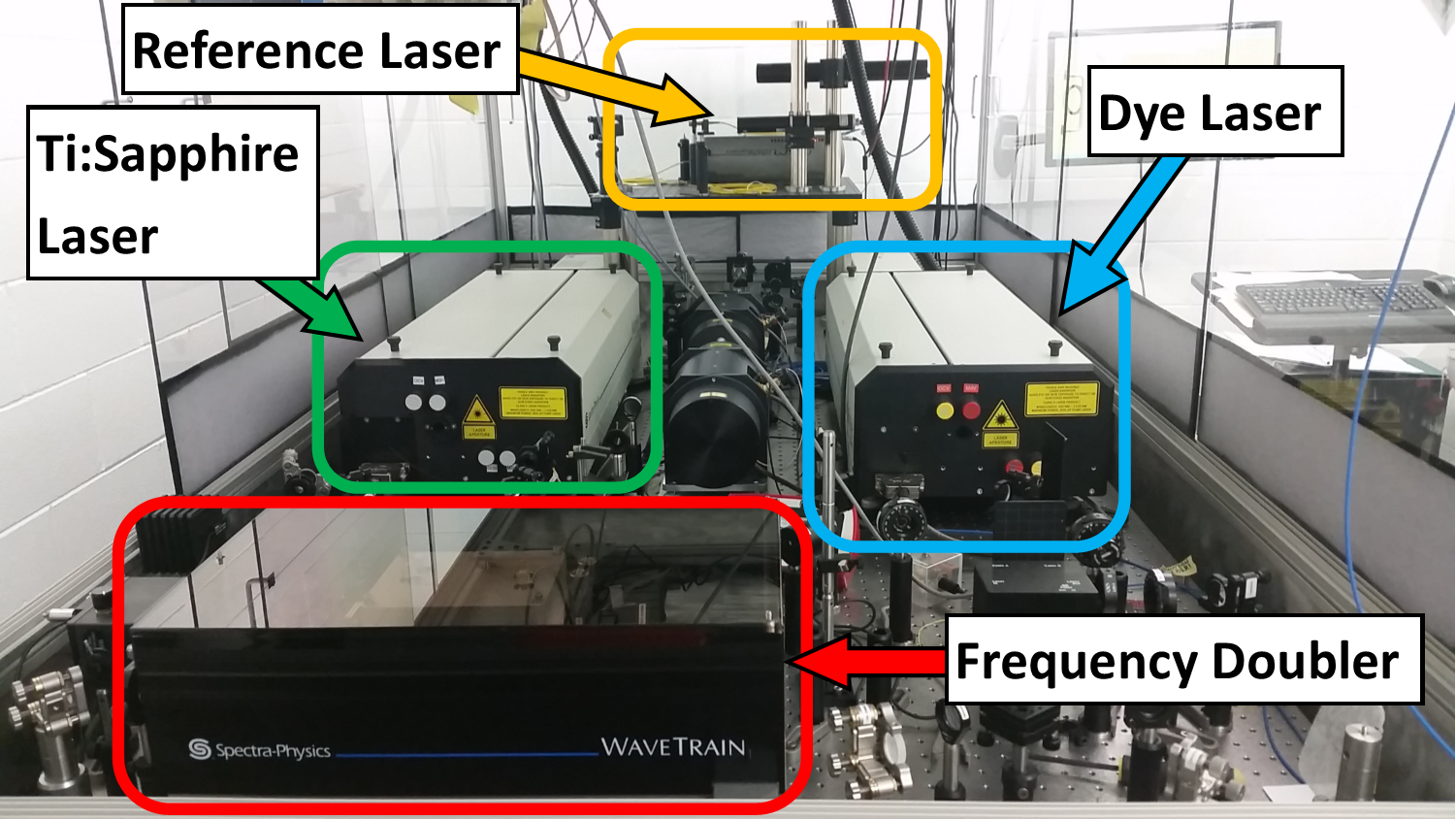Laser System
A solid-state CW laser (Millennia Pro, Spectra Physics) is used to pump a Ti:sapphire ring laser (Matisse TS, Spectra Physics)(Fig 1). The output wavelength of the Ti:sapphire laser can be varied for specific experiments.
In addition to the Ti:sapphire laser, a Matisse Dye laser is also installed, which allows for an even greater range of frequencies to be produced.

Figure 1: BECOLA laser system. Picture of laser table, with several important components noted.
A reference cavity monitors the fringe pattern of laser light and provides a short-term feedback signal to obtain a narrow line width of less than 1 MHz. A precision wavelength meter (WSU-30, TOPTICA), which is routinely calibrated by a stabilized helium-neon laser, provides an external reference to allow for long term stability of the wavelength of the Ti:sapphire laser or the dye laser. This system ultimately provides a frequency drift of the order of 5 MHz per 8 hours which is determined by the stability of the He-Ne laser.
The output of the Ti:sapphire laser or the dye laser is passed through a frequency doubler (WaveTrain, Spectra Physics) with lithium triborate (LBO) crystals. Typically about 10% of input laser power is converted into the second harmonic light (Table 1).
Lastly, a system of mirrors transports the laser light to an optical coupler. Note that either wavelength region has its own system of mirrors and coupler. It then travels to the experimental area, via a fiber optic cable. Note that each wavelength region has its own system of mirrors and coupler, in order to ensure that both the lens material and coating help to minimize intensity loss.